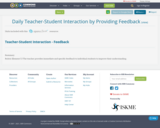
Rubric Element 1.1
The teacher provides immediate and specific feedback to individual students to improve their understanding.
- Subject:
- Education
- Material Type:
- Primary Source
- Date Added:
- 02/28/2018

Rubric Element 1.1
The teacher provides immediate and specific feedback to individual students to improve their understanding.

Cultural heritage has a crucial role to play in education, and we want to bring this source of knowledge to every learner, educator and educational organisation. One of the ways that we do this is through Europeana’s Education MOOCs - or Massive Online Open Courses - which allow large numbers of participants to learn new skills and develop their knowledge through online teaching. The online course will explore the educational potential of digital cultural heritage to support teachers and educators to efficiently integrate it into their lessons and practices, regardless of the subject they teach. The final goal is to design engaging content for students, museumgoers and lifelong learners to prepare them as active and responsible citizens and to thrive. Register now: https://www.europeanschoolnetacademy.eu/courses/course-v1:Europeana+Culture_EN+2022/about
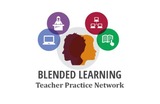
Why is it important that students be careful what is posted for everyone to see? Students will investigate and discuss these questions during this module that directly relate to their daily life. Students will work cooperatively in groups to design an infomercial to be presented to elementary students and/or parents and community members. Key Learning Targets: I can use technology to produce and publish my work, and link to sources.I can include multimedia projects or visual displays when they will be helpful in clarifying and emphasizing information.I can actively participate and contribute to a discussion with my teacher and my peers. I can present my findings to a group or audience in a clear and concise way.I can create a storyboard to prepare a public service announcement. I can compare contrast trends of technology. I can write an explanatory paragraph to examine a topic (present and future digital footprint).

In this problem-based learning module, students will investigate why is it important that students be careful what is posted for everyone to see. Students will investigate and discuss these questions during this module that directly relate to their daily life. Students will work cooperatively in groups to design an infomercial to be presented to elementary students and/or parents and community members. Key Learning Targets: I can use technology to produce and publish my work, and link to sources.I can include multimedia projects or visual displays when they will be helpful in clarifying and emphasizing information.I can actively participate and contribute to a discussion with my teacher and my peers. I can present my findings to a group or audience in a clear and concise way.I can create a storyboard to prepare a public service announcement. I can compare contrast trends of technology. I can write an explanatory paragraph to examine a topic (present and future digital footprint).
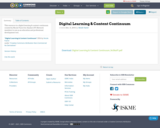
This resource is a digital learning & content continuum created by Nicole Fuerst for Alaska's DTi Network members to use as an education and professional development tool.

This handbook from Europeana Education and European Schoolnet showcases best practices and examples of digital learning during the pandemic. It provides a resource to help educators throughout Europe find innovative, ready-to-use educational material.

In this problem-based learning module, students will explore the importance of sleep and the impact sleep has on their lives. During the launch phase students can choose to record sleep data via downloaded apps or in a sleep diary. Days 2 through 4 have students explore the concept and necessity of living organisms need to sleep. On day 2 the participants will take a series of cognitive test for baseline data. Through station rotation and a jigsaw activity learners will become familiar with circadian rhythm and sleeping disorders. Finally, days 5-7 have the students produce a video or infographic to communicate the importance of sleep and its relationship to performance both physically and academically.
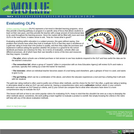
Evaluating OLPs
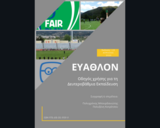
Students' moral education appears increasingly necessary in our days, as the cultural and moral frame of modern life has compressed moral values like respect, personal and social responsibility, fairness, solidarity, tolerance, acceptance of diversity. The development of moral-active citizen is considered as main objective in policies of European Union and United Nations Organization, so that intense moral decline phenomena of our days could be faced. Socrates argued that “Virtue is teachable”, since parameters of moral character such as empathy, collaboration culture, problem solving skills are being developed throughout all our lifespam.
Sport engagement often emphasizes in cognitive and kinetic skills overlooking social, sentimental and psychological skills. Thus, just participating in sport does not necessarily promote moral development. Consequently, sport programs have to incorporate strategies directed at the development of moral values and moral reasoning.
Social scientists argue that, it is not possible to develop personal and social responsibility in students, just by oral instructions. Only “learn-by-doing” methods could help students transfer the developed skills, in different contexts of their lives.
Physical Education has been an outstanding setting for applying moral development strategies, due to the opportunities it provides for reflection, role playing, responsibility building, solidarity and collaboration culture. For this reason, over the past two decades, moral development programs were applied in Physical Education, such as Teaching Personal and Social Responsibility Model (T.P.S.R.) and the Sport Education Model (S.E.M.). Solidarity, honesty, fairness, responsibility, collaboration, respect of self and others, are moral values that should be strengthened during a school PE session.
“Evathlon” could be described as an educational program aiming in developing those moral values, in the context of school Physical Education. By triggering students’ critical thinking and critical judgment on earlier experiences, as well as by engaging them in specifically planned sport experiences, morality development is sought.
Program’s main objective is to have a positive impact on students’ social behavior during sport events, as well as in other contexts of their social life. Educative interventions in the setting of school football events have been planned to gradually develop K7 to K9 students’ morality.
Being based on social cognitive theory and on structural learning theory, the interventions combine above-mentioned theories to provide better social interaction and develop moral reasoning in an optimal way. Students are being inspired and motivated by their “sport role models" using interactive tools (e.g. videos, word
clouds, quizzes, comics) in asynchronous e-learning environment (LMS Edmodo) and then during school football events they experience in practice respect in rules, interact, develop social skills, confront moral dilemma situations and cultivate their moral reasoning.
Physical Education and school sport events constitute ideal environments for experiential and moral dilemma situations, under conditions of safe and moderate competition. Moreover, football is a sport of moderate bodily contact, offering lots of occasions for social interactions that increase the potential of positive, as well as antisocial and illegitimate behaviors.
'Evathlon' innovates, as by using blended learning techniques, gives students a central role in the educational process, developing their experiences and facilitating their team-based approach to knowledge. Sport role models and specially designed “learn-by-doing” experiences promote the adoption of desirable fair play
behaviors.
Decisive for fulfilling the aim of Evathlon sport program, is the carefully designed educational process, which actively involves students in all stages, thus strengthening their engagement in it, providing opportunities for critical reflection, role playing, problem solving and adoption of “desirable behaviors”.
At the same time, program planning permits its feasible adjustment in the context of any individual or team sport. Its positive effect in the improvement of student social behavior is expected to be significant, confirming the effectiveness of the intervention and prompting its extensive adaptation in other teaching areas that have been outlined for school Physical Education.
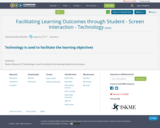
Rubric Element 1.2
Technology is used to facilitate the learning objectives/outcomes.

Examples of using FlipGrid in a classroom.
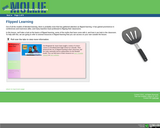
Flipped Learning
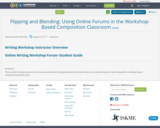
This module contains instructor resources and student-facing materials to facilitate the use of online forums to teach a blended, workshop-based writing/composition class.
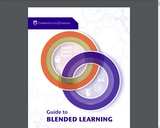
Recognising the potential of blended learning, COL advocates the systematic integration of technology in teaching and learning in higher education institutions through policy development, capacity building and the use of appropriate low-cost technologies. While working with partner institutions for building capacity and implementing technology-enabled learning, it became clear that a definitive source on blended learning design would help teachers to follow available best practices. The idea for this Guide to Blended Learning emerged from this need. We hope this will be a valuable resource for teachers developing blended courses for effective student learning.
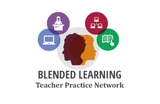
In this problem-based learning module, students will research health issues that are relevant to elementary students k-3. Students will look at perceptions, influences, education, research and discussion.Information will be provided through various ways including direct instruction, small group instruction by the classroom teacher, online research, and real-life research. Students will research media influences on health and develop a student-produced Public Service Announcement that will be shared with their peers as well as k-3 students in the district. Students will also have the opportunity to learn from each other and share their ideas with community stakeholders and plan next steps to promote healthy lifestyles in our community.
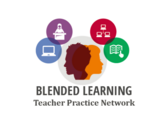
Combined with the three other modules bearing the same name, students will learn what is trustworthy on the internet. This module focuses on the credibility of websites based on who created it, when it was created/updated, and why it was created. After students go through a station rotation on the subject, they will create a checklist, in small groups, that will help peers understand which sources to trust on the internet.
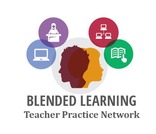
Students will spend 3-5 days learning about bias. They must figure out what bias is and how to spot bias in an online article. For the final product students will be asked to create a product that their peers can use to identify bias.
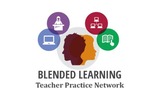
In this problem-based learning unit, the Class will discuss what it means to be empathetic. Then, situations in which empathy is necessary will be role played. Students will then roll 2 dice, one die will determine their audience and the other die will determine the task they are to create a solution to. Sample audience and tasks include creating a tool to access an out of reach object for a child, vision impaired, or person in a wheelchair. Students will hand draw prototypes and then utilize a free online 3D modeling application to design their solutions for sharing.
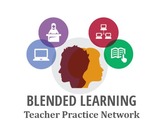
Throughout this problem-based learning module students will address real world skills. Students will be asked to brainstorm ideas and think innovatively both independently and collaboratively in addressing a real-world problem that is relevant to their daily lives and surroundings. Students/teams will be encouraged to use the internet for research purposes in their design phase. What components should be included for a modern, updated classroom? Students will utilize various online platforms to design an ideal, modern, contemporary “dream classroom”. Students will incorporate components that would meet the needs of all learners and a classroom that would be able to integrate technology. These classrooms can be shared with relevant individuals in the community and others in the school building.

Throughout this problem-based learning module students will address real world skills. Students will be asked to brainstorm ideas and think innovatively both independently and collaboratively in addressing a real-world problem that is relevant to their daily lives and surroundings. Students/teams will be encouraged to use the internet for research purposes in their design phase. What components should be included for a modern, updated classroom? Students will utilize various online platforms to design an ideal, modern, 21st century “dream classroom”. Students will incorporate components that would meet the needs of all learners and a classroom that would be able to integrate technology. These classrooms can be shared with relevant individuals in the community and others in the school building.